어서 오십시오! Let’s explore South Korea.
FUN FACTS
- 51.2 million people live in South Korea, which is slightly smaller than the state of Virginia.
- Seoul is the capital and the largest city with 10 million people. A quarter of South Korea’s population live in Seoul and the surrounding area.
- 70% of the land is covered by hills and mountains.
- At birth, South Korean children are considered 1 year old and everyone turns a year older on January 1. So if you were a South Korean born in mid-December, you would be considered 2 years old when an American child would be only 2 weeks old!
- Children look forward to the Lunar New Year celebrations which are three days long. Over the new year children get gifts, often money wrapped in red envelopes or red packets, from family and friends.
- People in Korea sometimes wear their traditional costumes, such as the hanbok seen to the right, for cultural festivals like Chuseok.
- Sesame seeds, chilis, kimchi and rice products are the most common ingredients in Korean dishes. Koreans mainly eat with spoons and metal chopsticks. The spoon is used for rice, stews and soups only.
- In addition to regular school, many parents enroll their kids in a private tutoring service called a hagwon (HAH-gwon). Children attend school during the day and then go to a hagwon for studying after school, because parents want their kids to excel and not fall behind.
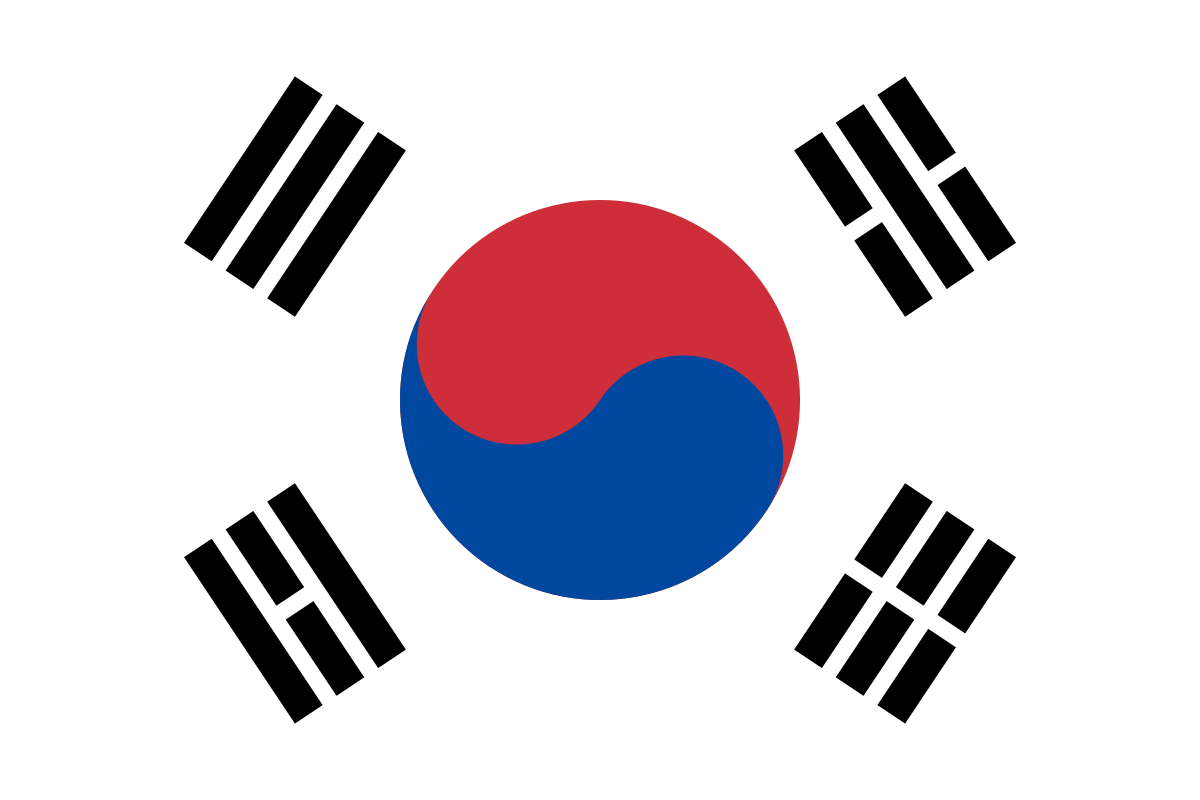

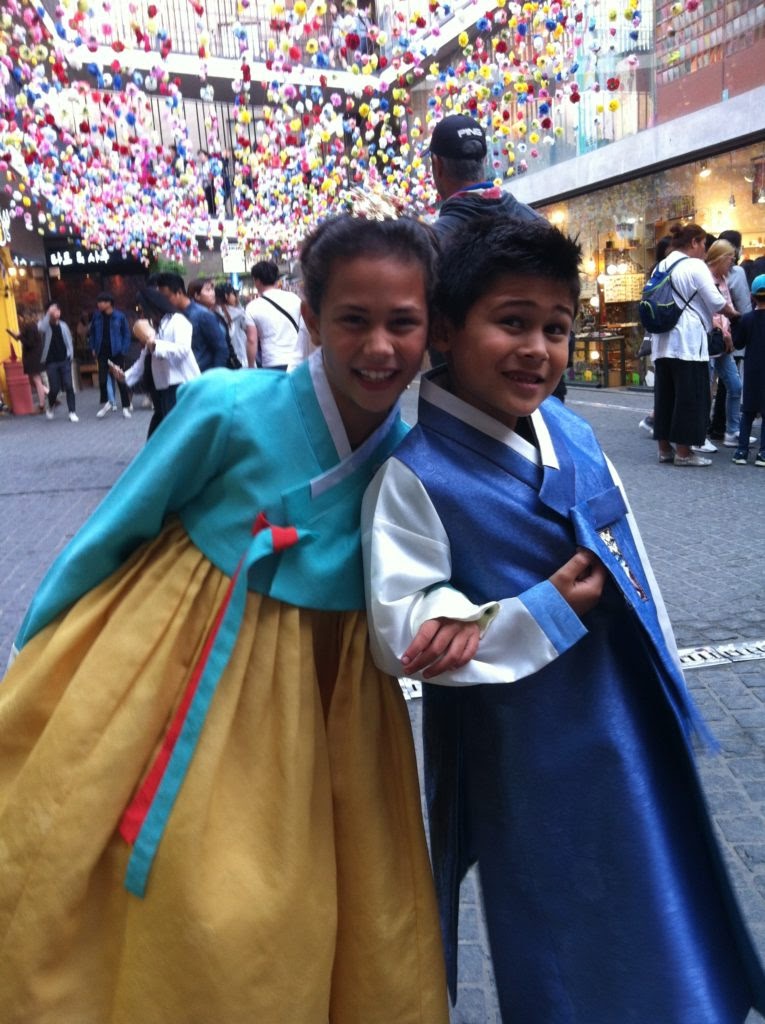
LET’S TAKE A VIRTUAL TOUR OF KOREA
Take a quick tour of Korea with the University of Michigan’s Nam Center for Korean Studies and see photos of Seoul, tasty food, palaces, and an amusement park!
WHY ARE NORTH AND SOUTH KOREA TWO COUNTRIES?
Japan invaded and ruled over Korea from 1910-1945. When World War II ended and the Japanese surrendered, the Soviet Union and the United States occupied Korea and chose to divide the country at the 38th parallel. The North, officially the Democratic People’s Republic of Korea, was under Soviet occupation, and the South, officially the Republic of Korea, was under U.S. occupation. By 1950, this led to the Korean War, which ended in an armistice in 1953. Without a formalized peace treaty, tensions continue to divide the Korean peninsula. Both governments claim to be the sole legitimate government of the region. After 65 years, just two years ago, the leader of North Korea stepped across the border and shook hands with the leader of South Korea. Older traditions on this page may be practiced in both parts of Korea, but images of contemporary life are from South Korea.
LEARN SOME KOREAN
LANGUAGE
The Korean language is the official language of South Korea, spoken by 99% of the population, but English and some Chinese are part of the curriculum as well. Korean has no obvious linguistic cousins, with different linguists arguing that it is related to Japanese or to the Altaic languages such as Turkish and Mongolian.
Hello in Korean is pronounced Annyeonghasaeyo.
Watch the video below to learn to count to 10 in Korean.
WRITING
Until the 15th century, Korean was written in Chinese characters, and many Koreans can still read Chinese well. In 1443, King Sejong the Great of the Joseon Dynasty commissioned a phonetic alphabet with 24 letters for Korean, called hangul. Sejong wanted a simplified writing system so that his subjects could more easily become literate.
Like English, hangul has vowels and consonants. There are 19 consonants and 21 vowels in the modern Korean alphabet. Look at the chart below and find the hangul characters you would use for your name.
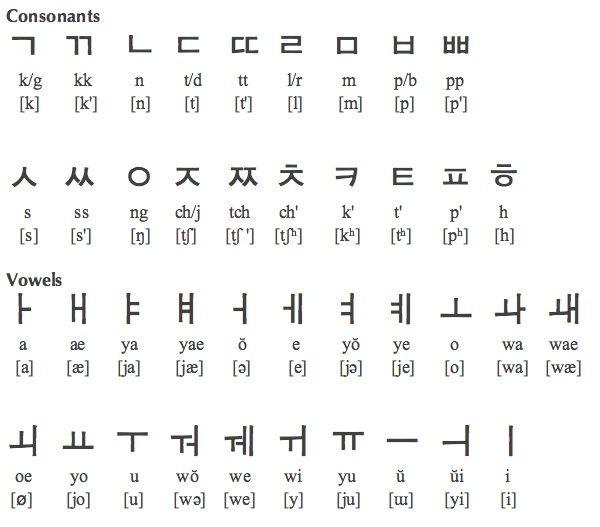
CHUSEOK FESTIVAL
Chuseok was traditionally a celebration of the fall harvest. Today people across Korea journey to their hometowns where families gather around tables filled with food, similar to Thanksgiving in the US.
Food is carefully and beautifully arranged on the family shrine so that the ancestors’ spirits can also enjoy the feast. Afterwards, some families visit graves and pay respects to their ancestors.
While it is a time of thanks, Chuseok is also a time of bounty and happiness. Some children traditionally dress in hanbok. People celebrate with lion dances and tug-of-war contests. Live Nong-ak folk music performances combine drumming, dancing, and singing.
UM NAM CENTER FOR KOREAN STUDIES CHUSEOK DAE PARTY
The University of Michigan Nam Center for Korean Studies welcomes the community to their first ever fully virtual celebration of Korean Thanksgiving! Join them online via their website for a week filled with exciting live events.
They will also have an interactive ‘Chuseok Dae Party’ Website released on Sunday, October 4, 2020 where anyone can go to learn about Chuseok, find recipes for popular holiday dishes, learn directions for traditional games, and download lists of materials for crafts you can make at home! It will also feature a special discount code for anyone who mentions the NCKS Virtual Chuseok Dae Party at Miss Kim Ann Arbor, a Zingerman’s restaurant serving traditional and great Korean food made with local ingredients.
Be sure to share pictures of your Virtual Chuseok Dae Party 2020 activities using the hashtag #umichuseok2020 and follow them on Facebook!
LION DANCE
SONGYEON
Songpyeon is made from rice powder dough wrapped around a sweet paste filling made of sesame, beans, or chestnuts. Moon shaped dumplings are then steamed with pine needles, infusing the house with their fragrance.
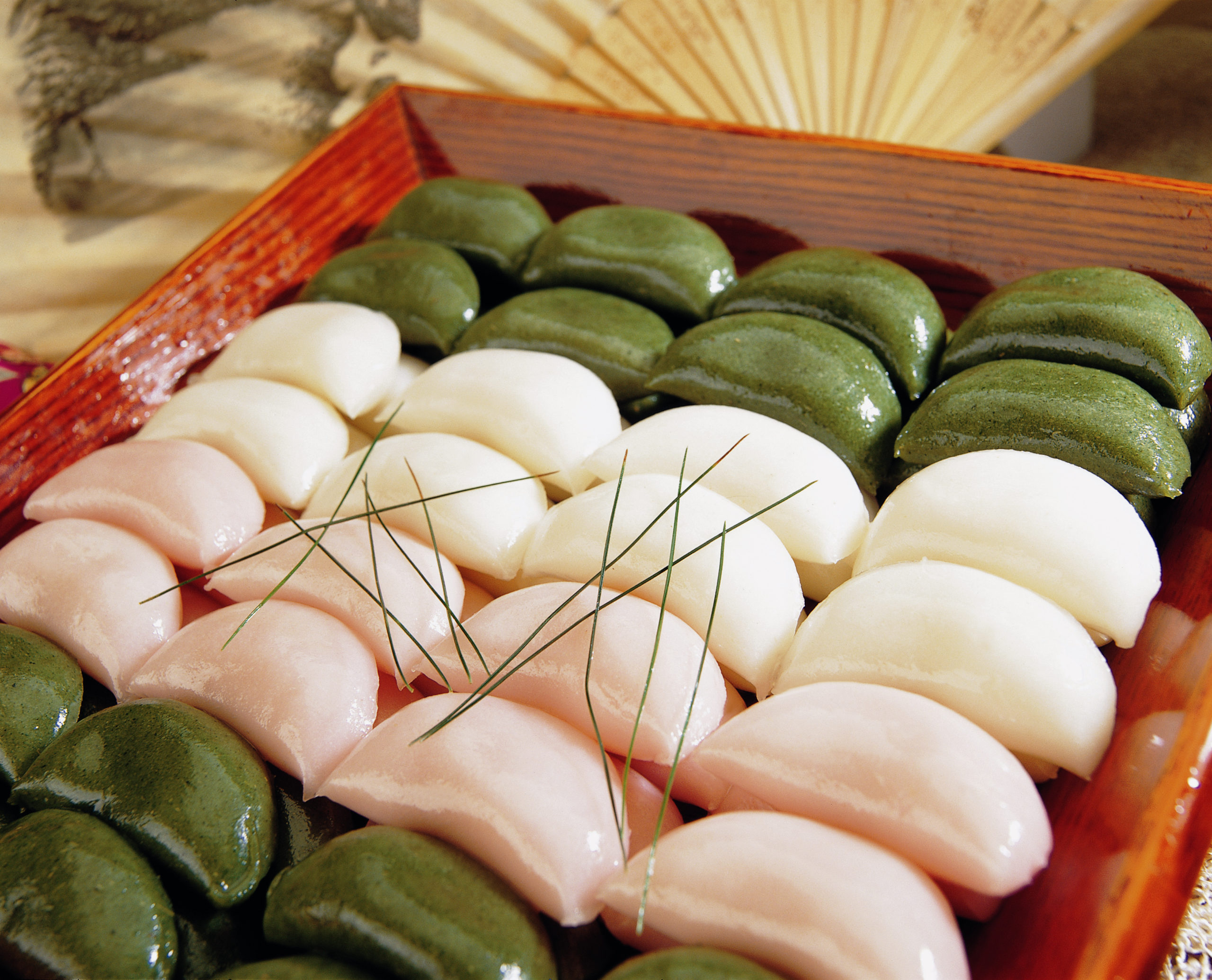
NONG-AK PERFORMANCE
TRADITIONAL KOREAN GAMES
DDAKJI
Ddakji is a traditional Korean game played using folded paper tiles. It is similar to the American game of Pogs that was popular in the 1990s. All you need to play are the folded ddakji tiles.
FOLD DDAKJI
Use the origami paper in your supply kit to fold 8 ddakji.
PLAY DDAKJI
Many people start with a game of Rock, Paper, Scissors to decide who will throw first. The other player places a ddakji tile on the floor. The throwing player tries to throw the tile so that it makes the other player’s tile flip over. If successful, thrower gets to keep the tile.
Throwing ddakji looks simple, but getting the angle and force necessary to flip the other player’s tile takes practice!
YUT-NORI
Koreans often play this traditional board game that dates back 100’s of years during the holidays. Yut Nori may seem like a simple game, however like chess, it involves strategy! The set is made up of 4 wooden sticks flat on one side and rounded on the other. Also in the set is the game board, traditionally made from cloth, and 8 playing tokens, 4 for each team.
MAKE A YUT GAME
Use the supplies in your kit to make a simple version of the game you can play at home.

PLAY YUT
Yut is usually played in teams with each team getting four tokens in their respective color. Team members take turns throwing the sticks and the number you can move your tokens is determined by the number of flat sides that are facing up (with the exception of having all round sides facing up, which is a five). It’s a fun game that can accommodate any number of players, since there is no limit on the number of people on a team.
KOREAN INFLUENCES ON AMERICAN POP CULTURE
K-POP
K-pop has become a truly global phenomenon thanks to its distinctive blend of addictive melodies, slick choreography and production values, and an endless parade of attractive South Korean performers who spend years in grueling studio systems learning to sing and dance in synchronized perfection.
Watch the video below to learn some k-pop dance moves!
EARLY K-POP
RECENT K-POP
MANHWA VERSUS MANGA
Manga and manhwa are similar in artwork and layout, which can result in accidentally categorizing these comics as Japanese in origin. But, there are some subtle differences between them.
The terms “manga” and “manhwa” actually come from the Chinese term “manhua,” which means “impromptu drawings.” Manga is read from right to left and from top to bottom. However, manhwa is similar to American comics in that they’re read from left to right and from top to bottom.
In print and digital, manga is usually published in black and white, unless they are special releases and printed in full color or with color pages. Print manhwa is traditionally published in black and white, similar to manga, but digital manhwa is published in color. Manhwa characters and backgrounds are drawn to focus on more realistic human proportions and appearances than manga. And digital manhwa often use music and soundbites to enhance the reading experience, something novel to their electronic presentation.
Click the buttons to the right to read manhwa online!
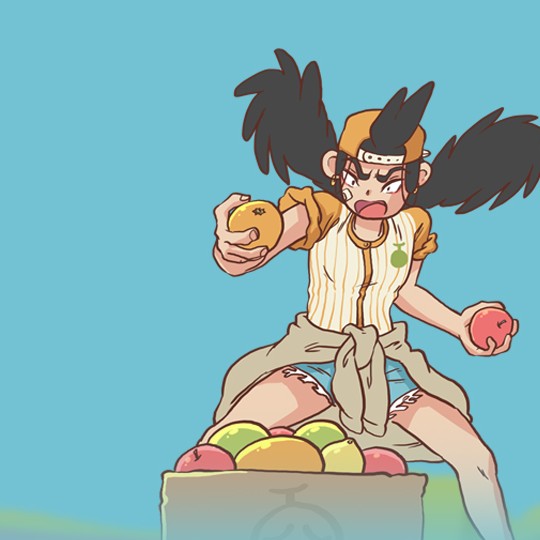
MAKE DALGONA
Dalgona is a spongy, sweet toffee-like candy sold by street vendors. It is one of simplest Korean street-food snacks made from sugar and baking soda, but, according to kid-foodies, they are the most fun to eat! That’s because there’s a game behind eating them. Inside each cookie is a shape. The goal of the game is to break the edges around the shape, keeping the shape intact. If you’re successful, you get to eat it for free!
- 1.5 tablespoons sugar (white or brown)
- 1/16 teaspoon baking soda
INSTRUCTIONS
Add the sugar to a metal ladle. Hold it carefully over low to medium low heat on the stovetop. When the sugar starts to melt around the edges, stir constantly with a chopstick or spoon. If it starts to smoke, raise the ladle a few inches above the heat and lower it closer to the heat once it cools off a little. Repeat as necessary until the sugar completely melts without any lumps.
Hold the ladle away from the heat to let it cool slightly, then stir in the baking soda. Stir quickly and vigorously (about 25 times) until the baking soda is completely dissolved and the frothy mixture turns light caramel-color. While stirring, you can bring the ladle closer to the heat for a short second or two to keep it warm, but don’t let it puff up too long. It will burn at the bottom.
Use a rubber spatula to pour and scrape the contents of the ladle onto a non-stick baking sheet, Let it cool for 10 to 15 seconds, then lightly press it down with a metal spatula or flat object a couple of times until it is the desired thickness. Press quickly, then repeat to help prevent the dalgona from sticking to the press.
Immediately, stamp it with a cookie cutter, firmly but not all the way through. Promptly remove the cutter.
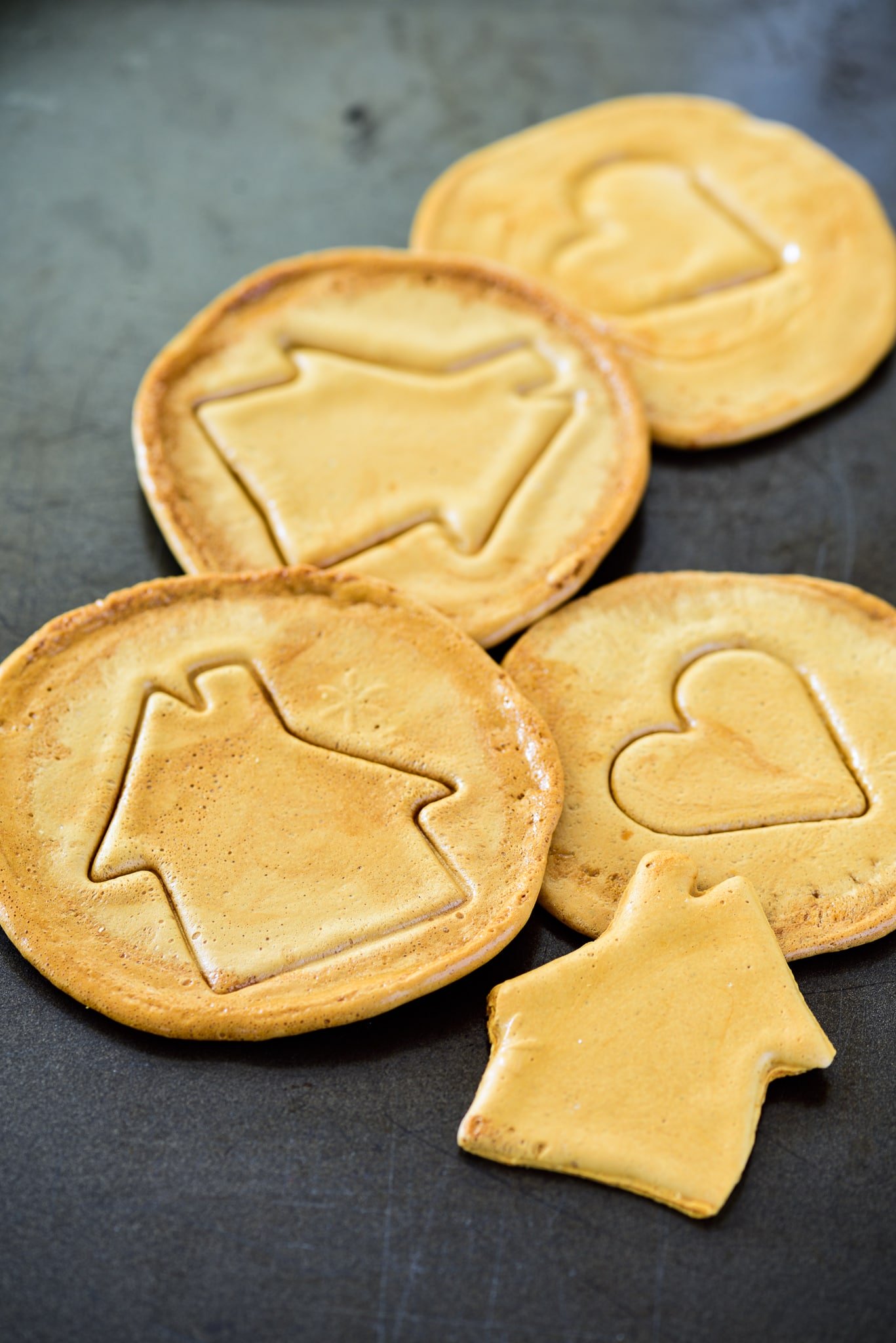
Try to eat dalgona carefully, avoiding the pattern you stamped in and without breaking the candy. It’s not easy! It can be an intense, competitive activity for kids.

NAM CENTER FOR KOREAN STUDIES CHUSEOK SCHEDULE
Oct 5th 7-8pm: K-Pop Dance Tutorial
Oct 6th 2:30-3:30pm: Taekwondo Workshop
Oct 7th 4-5pm: University of Michigan Museum of Art Tour & Charye Activity
Oct 8th 7-8pm: Korean Storytime
Oct 9th 9-11pm: Netflix Party: #Alive

